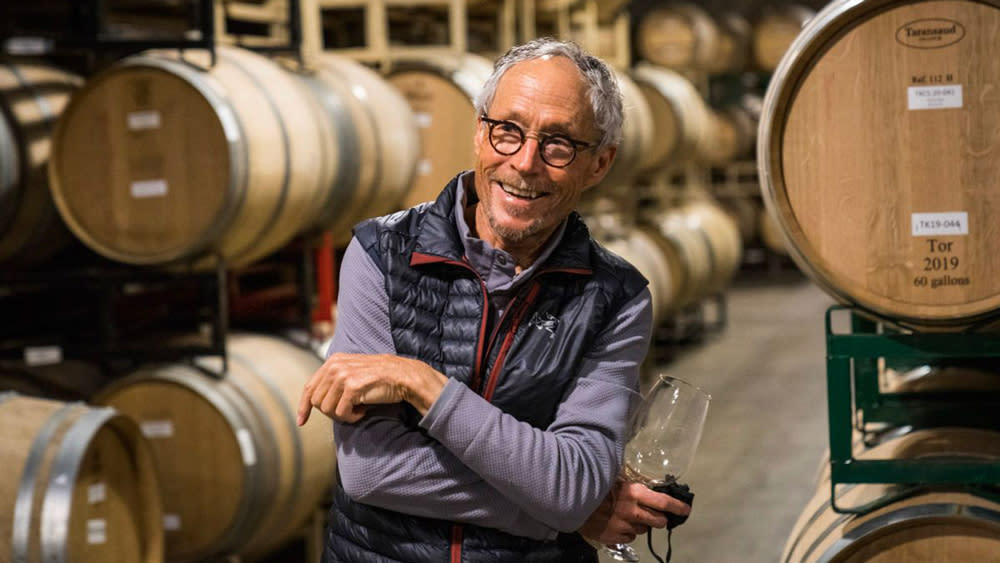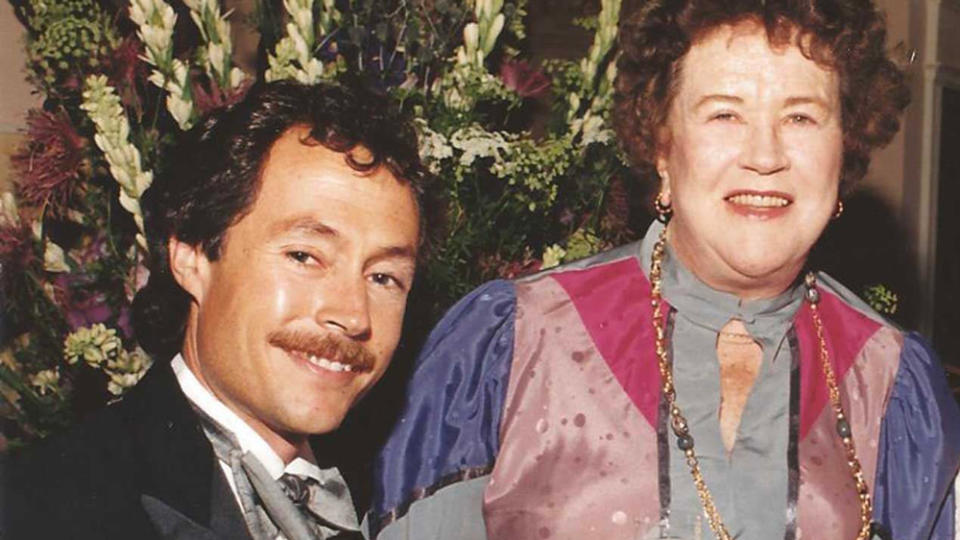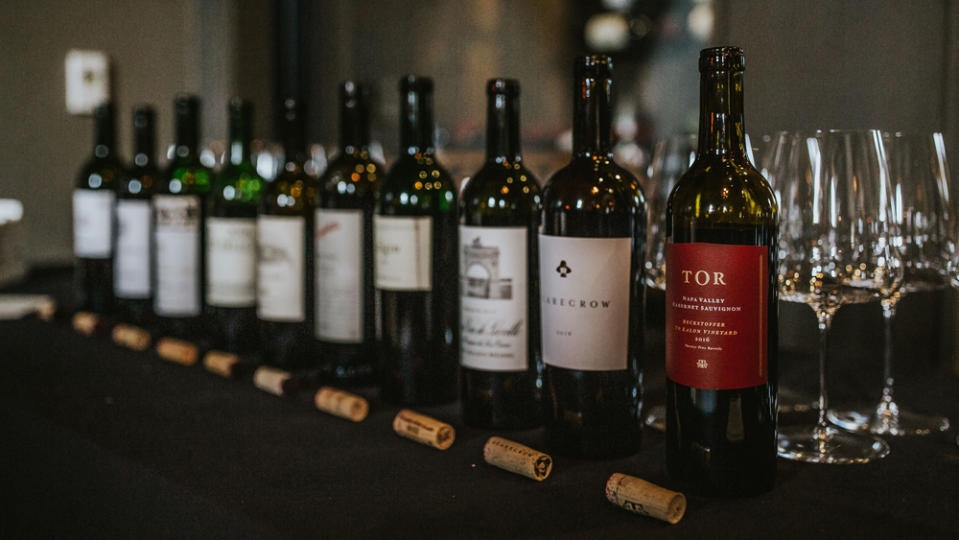The Man Who Helped Turn Napa Valley Into a Premier Culinary Destination Is Still Making Some of Its Best Wine

When origin stories of wine regions are discussed, it’s usually in the context of ancient or distant history, such as colonization by the Romans or vineyards planted by Cistercian monks. However, in the case of Napa Valley, whose grape-growing history extends back to 1839, one of the pioneers of the current tourism, hospitality, and culinary landscape is not only still on the scene but is making coveted, age-worthy wines from some of the valley’s finest vineyards. Napa icon Tor Kenward is known for the high-scoring wines he and his wife, Susan, produce alongside winemaker Jeff Ames at their Tor Napa Valley winery, which they established in 2001. Tor’s 2018 vintage received seven 100-point scores, five 99-point scores and ten 98-point scores, including four 100-point scores from different scoring publications for Tor 2018 Napa Valley Black Magic, a Cabernet Sauvignon-dominant blend.
Despite his hand in bringing food-and-wine-oriented tourism to Napa Valley, Kenward states, “I was a winemaker in my heart of hearts first,” which didn’t stop him from starting a culinary series at Beringer Vineyards that became the model for winery dining programs and had a large hand in making Napa Valley what it is today. His 2022 memoir Reflections of a Vintner, whichrecounts Kenward’s long and illustrious career in the wine industry, opens with forewords by Robert M. Parker Jr. and Thomas Keller, two other characters who have played a large part in the development of Napa’s renown as a world-class wine region and culinary hub. Its pages are filled with stories of luminaries such as Robert Mondavi and Julia Child, who are not only important figures in Napa Valley’s evolution but are also responsible for changing the way Americans drank wine and ate food. When it comes to altering the hospitality culture in Napa Valley (which in turn had an effect in all American regions to follow) Tor Kenward stands next to these giants.
More from Robb Report
Inside the Spanish Wine Rebellion That's Turning Out Delicious, Experimental New Bottles
How Acidity Affects Your Wine-and How Winemakers Try to Control It
This $14 Million European-Style Estate in Northern California Comes With Its Own Vineyard
When Kenward first visited Napa in 1975 to scout out wines for two retail wine shops he was managing, Napa was, in his words, “a narrow, one-stoplight valley with a few restaurants.” A 1968 Sunset Magazine map of the valley listed only 18 wineries, while today there are more than 400 wineries and 90 “downtown” tasting rooms. Kenward tells Robb Report that there were no hotels or destination restaurants, although he admits “Sally Schmitt’s Chutney Kitchen was our hidden secret.” He says that the mantra at the time was “Don’t let the sun set on the tourists.” Day trippers were tolerated, “but they were encouraged to drive home or to the airport, not to find a hotel or stay for dinner” at day’s end. The valley is now home to over 150 restaurants, including 70-plus in the city of Napa alone, which also boasts 24 hotels and 20 small inns.
In 1977, Kenward arrived in Napa Valley with plans to become a winemaker, and was hired by Beringer Vineyards, where within three years he was promoted to vice president. He describes his job there as being “in charge of all the fun,” with duties that included integrating winemaking with marketing, defining reserve programs, writing newsletters, and communicating about fine wine. Although meeting fabled winemakers like Robert Mondavi, Louis Martini, and Andre Tchelistcheff shaped Kenward’s “thinking about wine and winemaking over the next four decades,” it was a trip to France on behalf of Beringer that began the trajectory that changed Napa Valley hospitality. The plan for this three-week adventure was to “sit down with winemakers and chateau owners to taste, talk, and bring new ideas to Napa,” he says.

Kenward left Napa to visit France in 1981, the year that Napa Valley became California’s first recognized American Viticultural Area. “Beringer sent me to Europe to study winemaking and the wine business and I was introduced to Michelin-starred restaurants and hotels,” Kenward says. “More important, but related, was the extraordinary level of hospitality showed me at each winery I visited—it introduced me to a completely different world I felt we needed to bring back to Napa.”
Over long meals he gleaned the philosophy behind his hosts’ wines, while they also discussed ideas and dreams and forged friendships. With the French winemakers’ playbook in hand, he returned to the States and Beringer to create his own culinary programs to showcase wines and foster a community around them.
Shortly after Kenward started the culinary series at Beringer, Julia Child began visiting and the two became friends. Kenward states that Robert Mondavi also began culinary programs at around the same time, focusing on “Michelin-starred and other celebrity chefs,” while Beringer shone a spotlight on young and up-and-coming chefs, including Gary Danko, who became executive chef at Beringer Vineyards in 1985 and stayed there six years before branching out on his own and earning Michelin stars. Kenward and his wife Susan (who is a James Beard-award winning cookbook author), hosted several themed culinary series at Beringer, including those featuring great women chefs, American regional cuisine, and Japanese chefs. There was a celebrity chef series as well; Kenward recalls Charlie Trotter being among the first to contribute to a program.
Kenward was on the steering committee for the inaugural Auction Napa Valley in 1981, established by a group of vintners that included Robert Mondavi and his wife Margrit. Julia Child was aware of the programs he was developing at Beringer, “and invited me to join the board for her American Institute of Wine and Food, or AIWF,” Kenward says. “I went on to chair their annual wine auctions and Julia’s 80th Birthday in Washington DC. She later asked me to join the board for her and Mondavi’s Copia in Napa which I did. I never said no to Julia.”

Although during his 27 years at Beringer Kenward had a strong hand in the expansion of hospitality and tourism in Napa, he credits Mondavi with leading the charge. “Robert Mondavi is easily that most impactful American winery owner of the last century,” Kenward says. “He embraced tourism. Wine education and ‘the good life,’ as he called it, were in the spotlight, as were art, music, and culture.” And in addition to her role in food culture—she is, after all, the woman who taught Americans to not just cook but to eat French food—Julia Child was, in Kenward’s opinion, “one of many who made Napa Valley an international wine and food destination.”
The role of Napa Valley in the rise of the 1980s “New American Cuisine” and the subsequent farm-to-table movement can’t be overstated. As Kenward puts it, “In the 1980s and ‘90s America crawled out of its puritanical cage and embraced fine wine and food. Julia Child, the AIWF, celebrity chefs and winemakers, and best-selling cookbooks were elements, as was the American consumer who was more internationally traveled and wealthier than the past generation. It was an extraordinary time to be immersed in this revolution.”
Tor Kenward was immersed in the Napa Valley revolution, and he remains an ongoing part in its evolution. While just 40 years ago few would have predicted that today Napa would offer such a wide variety of restaurants as The French Laundry, Angèle, La Toque, Mustards Grill, Press, and Charter Oak, today it’s possible to not just enjoy a meal at any of those but to order a bottle of single-vineyard Cabernet Sauvignon created by Tor Kenward, who was there at the start.
Culinary Masters 2023
Don’t miss the food event of the year. Register for Robb Report’s Culinary Masters now. Or, for more information on Robb Report experiences, visit
Best of Robb Report
Why a Heritage Turkey Is the Best Thanksgiving Bird—and How to Get One
The 10 Best Wines to Pair With Steak, From Cabernet to Malbec
Sign up for Robb Report's Newsletter. For the latest news, follow us on Facebook, Twitter, and Instagram.


